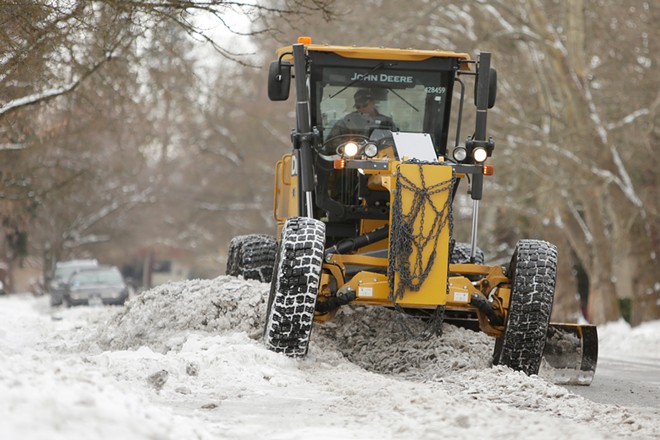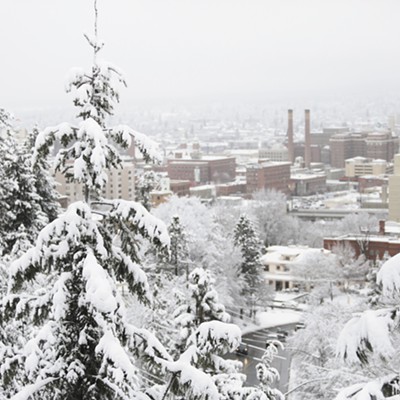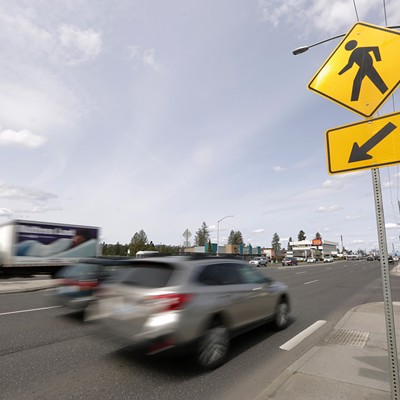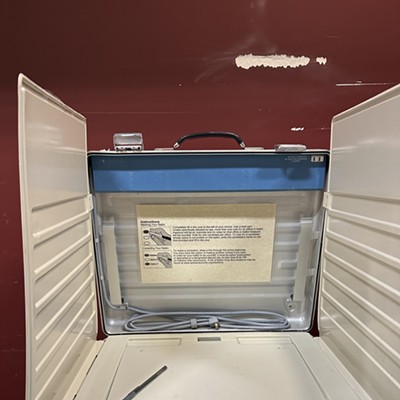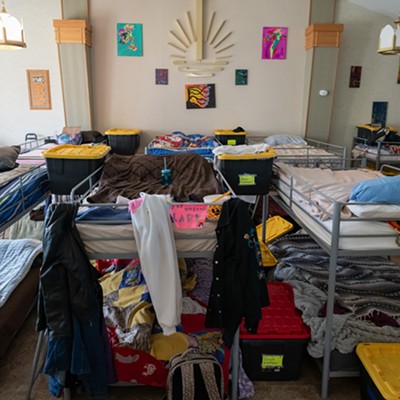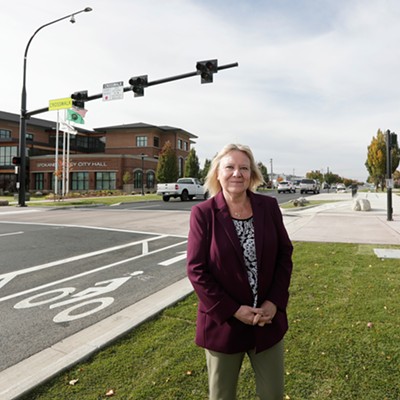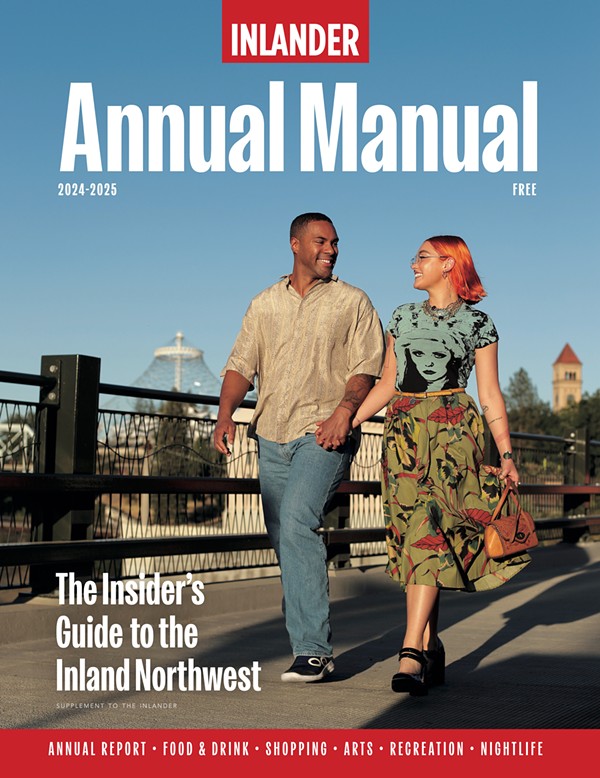Driving the hilly neighborhoods in Spokane and surrounding communities can be intimidating enough in a snow-heavy winter, even after plows attempt to clear the roads. But for those with limited mobility, or who walk or bus, getting around is even harder.
Vaughn Brown, 35, is a blind Spokane resident who works as an employment consultant for people with disabilities. His guide dog, Grant, is trained to find the path of least resistance and stick to a straight line. But in some places that may mean choosing between walking in the street, scrambling over berms or walking through someone's yard.
"Two Mondays ago, I was on Washington and North River Drive, and I was having difficulties crossing the street because the crosswalks where the ramps meet the street were completely blocked by 3 feet of snow," Brown says.
In situations like this, when icy berms block crosswalks or other public rights of way, Brown says the government is out of compliance with the Americans with Disabilities Act.
Not so, says Kirstin Davis, spokeswoman for Spokane public works.
"Keeping pathways clear takes a community effort," Davis says by email, noting that city policy says keeping sidewalks and walkways clear of snow and ice is the adjoining building owner's responsibility. City residents can file a complaint with 311 if an owner isn't clearing sidewalks and corners, and code enforcement may issue code violations.
"This year has been extremely challenging already with the accumulation of snow and cold temperatures," Davis says. "Plow drivers are trained to push the snow up to the curb as best they can, however with the amount of snow, we are running out of room, so it does move onto sidewalks."
Brown says when he lived in Boston for three years, snow in the crosswalks never seemed to be an issue.
"It's been frustrating, so we've been forced to switch to paratransit," Brown says, referring to the rideshare service for those who can't take fixed route buses. "They have very limited drivers, and the demand is higher."
Brown says he's had paratransit rides delayed by 40 minutes or longer. For his clients with developmental disabilities, he says, getting their schedule thrown off can be especially stressful.
Paratransit shuttles, which riders order through the Spokane Transit Authority, have been able to maintain their services throughout the icy weather so far, says Carly Cortright, STA's spokeswoman. But on the snowiest days that's partly because some people cancel their rides, she says. Currently, STA gives about 900 paratransit rides per day.
Paratransit riders are also responsible for clearing a path to their door so the driver can assist them. While Brown says he's lucky to have a neighbor who helps, others may not.
Even for those who don't have mobility issues, sidewalks have been hard to navigate.
Kyah Huguenin, a 27-year-old whose work commute is usually an easy five-block stroll on Hawthorne Road, says the county-cleared road near the Division Street "Y" has been treacherous.
On a recent Thursday, Huguenin says, the sidewalk got covered by chunks of dirty ice pushed off the road by plows. The only options were to walk in the lane of traffic or trudge through deep snow on private property.
"It's ridiculous. It's next to an urgent care," Huguenin says. "I'm not disabled. It is easier for me to get around than if someone is disabled; but if they are, that would be impossible."
While the city requires property owners to clear their sidewalks, the county doesn't, explains Martha Lou Wheatley-Billeter, spokeswoman for Spokane County public works.
"However, we ask neighbors to help take care of each other," she says.
Many bus stops also present physical challenges with deep snow or puddles. STA clears snow around its park and rides, transit centers, and 128 sheltered bus stops, where about 62 percent of riders get on the bus. Clearing around the other roughly 1,500 bus stops is up to neighbors and businesses.
"'Many hands make light work' is the best practice for community response to snow removal," Davis says. ♦

